Replacing pistons is one of the most important engine repairs you’ll ever face. When your engine starts showing signs of wear—excessive smoke, loss of power, or concerning knocking sounds—it might be time to consider this critical maintenance. We’ve seen countless drivers shocked by unexpected piston replacement quotes, often wondering if they could tackle the job themselves.
Whether you’re a DIY enthusiast or simply want to understand what you’re paying for at the shop, knowing the ins and outs of piston replacement is essential. The cost typically ranges from $1,000 to $4,000 depending on your vehicle’s make and model. We’ll break down exactly what influences these prices and walk you through the replacement process, giving you the confidence to make informed decisions about your engine’s health.
Understanding Piston Function and Failure Signs
Pistons are crucial components in your engine, converting combustion energy into mechanical force that powers your vehicle. These cylindrical parts move up and down within the engine cylinders, compressing air-fuel mixtures and transferring the explosive force to the crankshaft through connecting rods.
Common Symptoms of Failing Pistons
Knocking noises during acceleration often indicate piston problems, especially when they become more pronounced as engine RPMs increase. Blue or gray exhaust smoke points to oil burning in the combustion chamber, typically caused by worn piston rings allowing oil to seep past. Decreased engine performance manifests as sluggish acceleration and reduced horsepower output when pistons can’t maintain proper compression. Excessive oil consumption—requiring frequent top-offs between oil changes—signals oil escaping past damaged pistons or rings. Rough idling creates noticeable vibrations while stationary, stemming from uneven compression across cylinders with damaged pistons.
When Piston Replacement Becomes Necessary
Piston replacement becomes unavoidable after scoring or scuffing appears on piston walls, creating permanent damage that compromises engine performance. Compression tests revealing values below 90 PSI in affected cylinders indicate important piston or ring wear requiring immediate attention. Broken piston rings can’t maintain proper sealing, leading to loss of power and excessive oil consumption that necessitates replacement. Melted or cracked pistons from extreme heat or pre-ignition can’t be repaired and demand complete replacement. Borescope inspections showing visible damage to piston tops, skirts, or ring lands confirm the need for replacement rather than repair options.
Piston Replacement Cost Breakdown
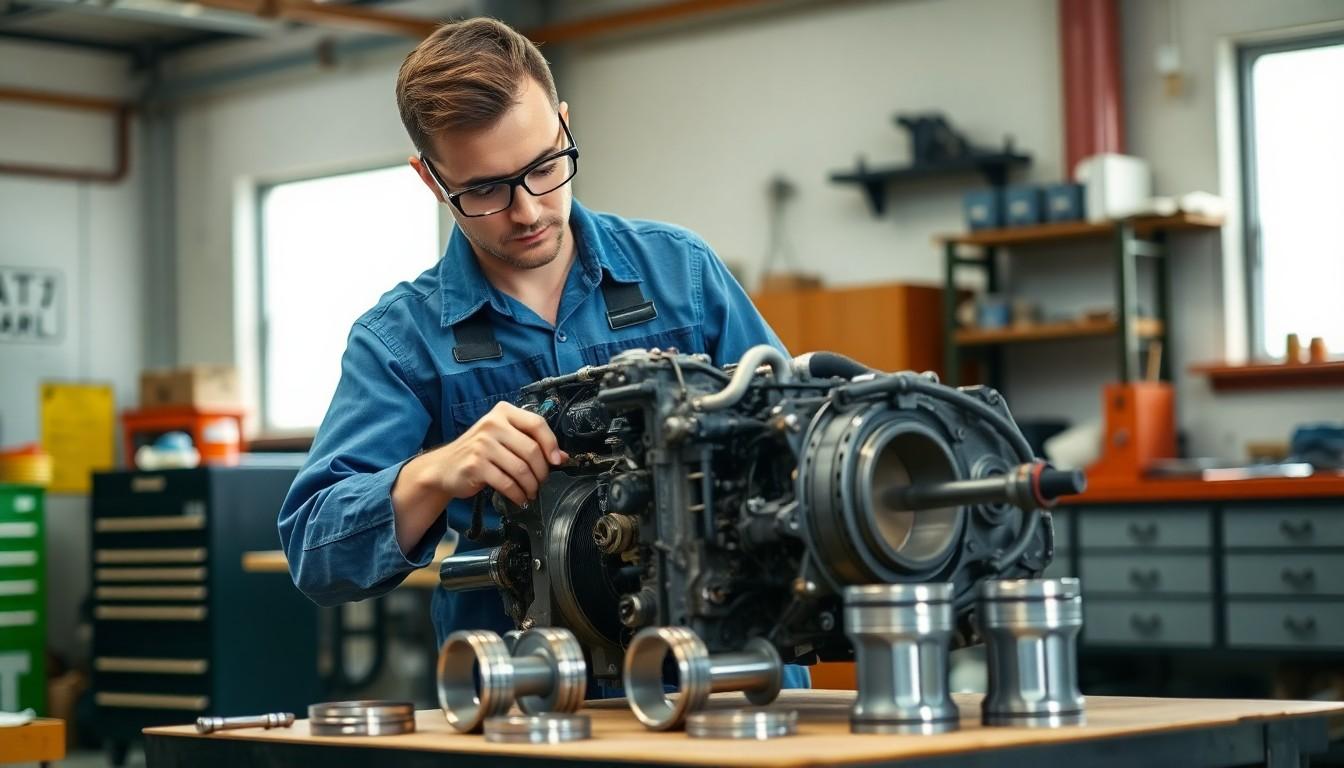
Understanding the financial aspects of piston replacement helps prevent sticker shock when your vehicle needs this critical repair. The total expense varies significantly based on several key factors including parts selection, labor requirements, and additional components that often need replacement during the process.
Parts Cost: OEM vs Aftermarket Pistons
OEM and aftermarket pistons represent the two primary options when selecting replacement parts, each with distinct cost implications. Aftermarket pistons provide a budget-friendly alternative, with prices starting as low as $108 from reputable industry manufacturers. These parts often deliver comparable performance to their OEM counterparts at a fraction of the cost. OEM pistons, manufactured by the original vehicle manufacturer, typically command premium prices but guarantee precise compatibility and adherence to factory specifications for your exact engine model.
Labor Charges for Piston Replacement
Labor comprises the largest portion of piston replacement costs due to the extensive disassembly required to access these deep engine components. Mechanics typically charge between $1,000 and $2,000 for labor alone when replacing pistons in a standard 4-cylinder engine. This substantial cost reflects the technical complexity of removing the engine from the vehicle and completely disassembling it to access the pistons – a process that consumes many hours of skilled technician time.
Additional Parts You May Need to Replace
Piston rings almost always require replacement alongside the pistons themselves, adding approximately $1,100 to the total project cost. These rings create the critical seal between the piston and cylinder wall, and installing new pistons with worn rings undermines the effectiveness of the repair.
Depending on your engine’s condition, several other components frequently need replacement during a piston job:
- Cylinder liners that show scoring or excessive wear
- Connecting rods that have developed play or damage
- Main and rod bearings that exhibit wear patterns
- Gaskets and seals throughout the engine assembly
These additional parts significantly impact the final cost of your piston replacement project. For a complete repair on a 4-piston engine, expect total costs ranging from $1,000 to $2,000 including both parts and labor, with prices increasing for engines with additional cylinders.
DIY Piston Replacement Guide
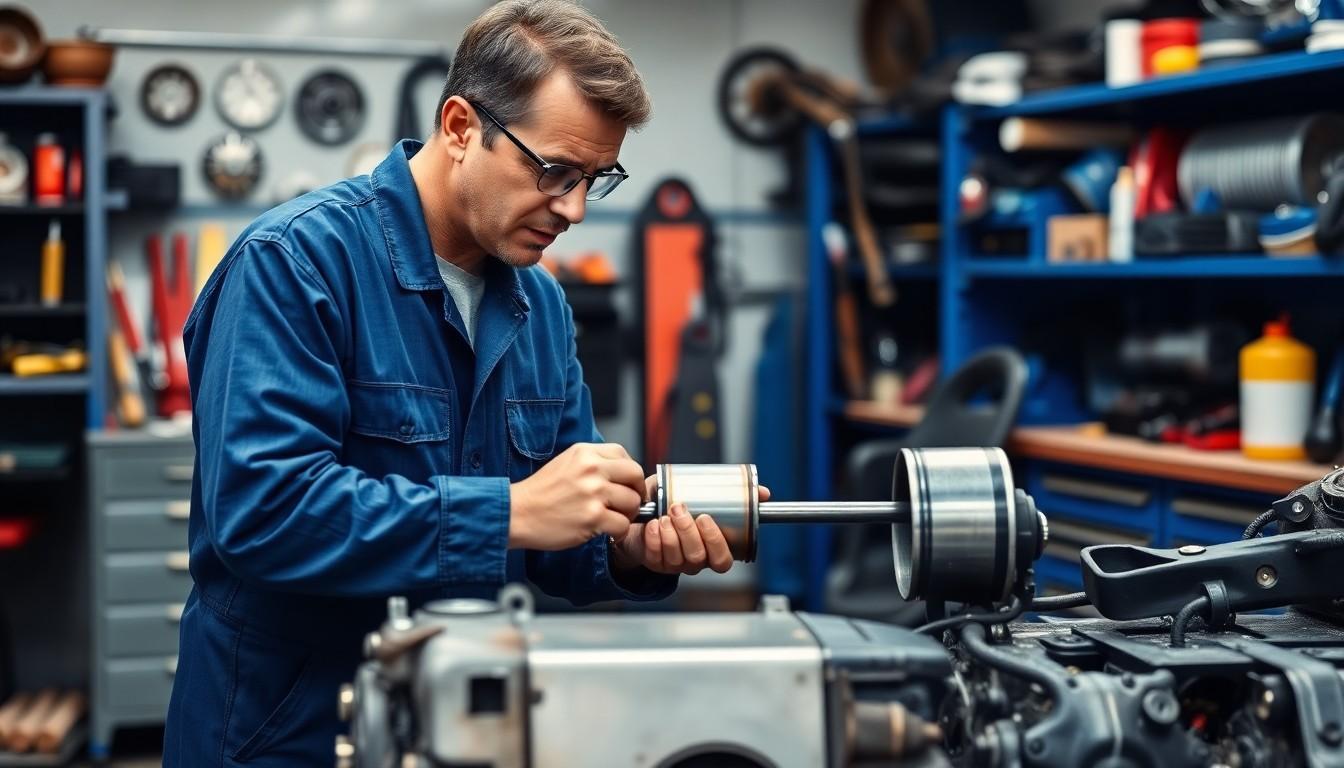
Replacing pistons in an internal combustion engine requires precision, patience, and proper technique. We’ve created this comprehensive guide to help automotive enthusiasts tackle this complex repair job with confidence.
Tools and Materials Required
The right equipment makes piston replacement significantly easier and more effective. Our recommended toolkit includes a ratchet and socket set for removing fasteners, a piston ring compressor for reinstallation, and quality piston oil for proper lubrication. You’ll also need a dead blow hammer or piston hammer for gentle tapping, new piston assemblies for replacement, and lint-free cloths to prevent contamination. Additional materials include connecting rod caps and bearings, plus new wrist pins, circlips, and piston rings if your exact repair requires them.
Engine Removal and Disassembly Process
Complete engine removal provides the best access for piston replacement work. Start by extracting the engine from the vehicle to eliminate obstructions and create a clean working environment. Loosen the head bolts gradually in a cross-pattern sequence to maintain even pressure distribution when removing the cylinder head. Take out the cylinder bolts and carefully remove the cylinder while ensuring the piston remains attached to the connecting rod. Protect the engine cases by stuffing the openings with lint-free rags to prevent debris contamination during the repair process.
Piston Removal and Installation Steps
Removing old pistons requires methodical steps for success. Begin by rotating the engine until pistons reach bottom dead center for optimal access. Turn the engine to expose the lower portion of the piston assembly, then use your socket set to carefully remove the piston bolts by systematically loosening each nut. Extract the connecting rod cap and bearing, setting these components aside in an organized manner. Push the piston out through the cylinder head bore using a hammer handle with gentle, controlled force.
Installation of new pistons follows a precise sequence. Apply oil generously to the new piston components, particularly the moving parts, and thoroughly lubricate both the cylinder and piston ring compressor. Position the piston installer tool (compressor) against the rings, then insert this assembly into the cylinder bore. Tap the piston head gently with your hammer until it slides completely into position, beyond the compressor’s grasp. Remove the compressor once the piston is properly seated. Reconnect the piston to the crankshaft by turning the engine and guiding the rod end into place. Reattach connecting rod bearings, end caps, and bolts according to manufacturer specifications. Finish by tightening all piston bolts to proper torque specifications in a cross-pattern to distribute pressure evenly across the assembly.
Professional vs DIY Replacement: Pros and Cons
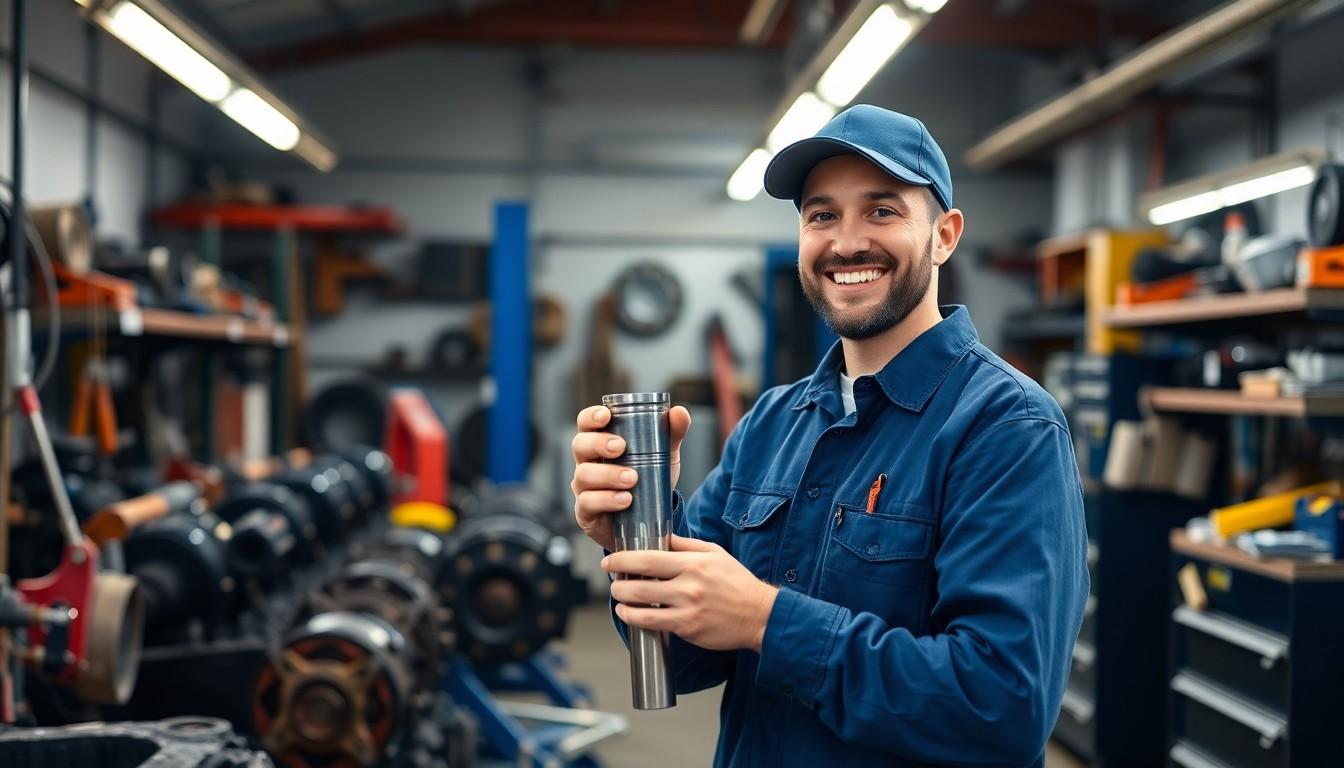
Deciding between professional and DIY piston replacement involves weighing several factors including expertise, time investment, and financial considerations. Each approach offers distinct advantages and disadvantages that can significantly impact the outcome of your engine repair.
Professional Replacement
Professional piston replacement provides reliable results backed by expertise and warranties. Certified mechanics bring years of experience to the table, ensuring proper installation and engine reassembly.
Pros:
- Expertise and Precision – Mechanics possess specialized knowledge and tools to handle complex engine repairs accurately
- Quality Assurance – Professional shops typically use high-grade parts and follow manufacturer specifications
- Warranty Protection – Most repair shops offer warranties on both parts and labor, providing peace of mind
- Efficiency – Experienced technicians complete the job more quickly than most DIY enthusiasts
Cons:
- Higher Cost – Labor charges add $500 to $1,500 to your total bill
- Limited Control – You’ll have less input on exact parts and procedures
- Scheduling Constraints – Your vehicle may be unavailable for several days during repairs
DIY Replacement
DIY piston replacement appeals to mechanically inclined individuals looking to save money and gain intimate knowledge of their engine.
Pros:
- Substantial Cost Savings – Eliminating labor costs can reduce your total expense by $500-$1,500
- Complete Control – You decide which parts to use and can inspect every component personally
- Skill Development – The process builds valuable mechanical expertise and engine knowledge
- Personal Satisfaction – Successfully completing this complex repair brings important accomplishment
Cons:
- Time Intensive – The job typically requires several days to complete for inexperienced mechanics
- Tool Requirements – Specialized equipment like piston ring compressors and torque wrenches are necessary
- Risk of Errors – Mistakes during reassembly can lead to engine damage and additional expenses
- No Warranty – DIY repairs lack professional guarantees if issues arise later
Time and Cost Savings
Time and cost considerations vary dramatically between professional and DIY approaches to piston replacement. Professional services offer efficiency at a premium price point, while DIY methods trade time for financial savings.
Professional mechanics complete piston replacements in 8-15 hours of labor, translating to 1-3 days of shop time. Their efficiency stems from experience and specialized tools that streamline the process. This time advantage comes with labor costs ranging from $500-$1,500 depending on your vehicle’s complexity and local rates.
DIY enthusiasts should plan for 15-30 hours of work spread across multiple days or weekends. First-time DIYers often need additional time for research, gathering tools, and potential troubleshooting. The substantial labor savings of $500-$1,500 offset this time investment for budget-conscious owners with mechanical aptitude.
Quality and Warranty Considerations
Quality outcomes and warranty protection represent crucial differences between professional and DIY piston replacements. These factors can impact both short-term reliability and long-term engine performance.
Professional replacement provides several quality advantages, including access to OEM (Original Equipment Manufacturer) parts through established supply chains. Certified mechanics follow manufacturer-exact procedures and torque specifications, ensuring optimal installation. Most importantly, professional repairs include warranties typically ranging from 12-24 months, covering both parts and labor if issues develop.
DIY repairs lack formal warranties but offer quality control through personal attention to detail. Home mechanics can research and select premium components, potentially upgrading to forged pistons or performance-oriented parts. The quality outcome depends heavily on individual skill level, attention to detail, and willingness to follow proper procedures. Many DIYers mitigate risks by purchasing quality parts with manufacturer warranties, though these typically cover only components, not labor or consequential damages.
Factors Affecting Piston Replacement Costs
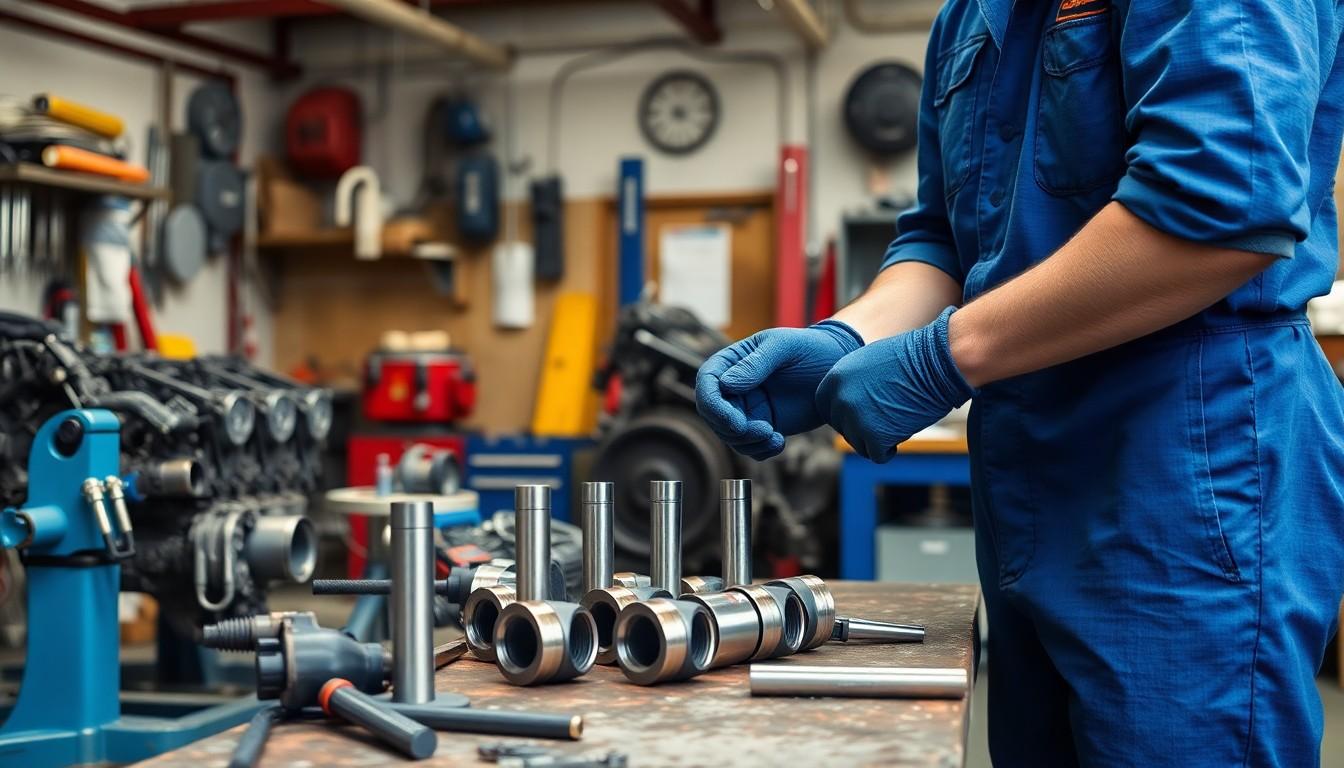
Piston replacement costs vary significantly based on multiple factors that influence both parts and labor expenses. Understanding these elements helps vehicle owners prepare for this substantial repair investment.
Vehicle Make and Model Differences
Vehicle make and model create substantial cost variations in piston replacement. Different manufacturers design engines with unique specifications that affect both parts compatibility and labor requirements. Luxury or high-performance vehicles typically require more expensive components, with some premium brands commanding piston costs of $1,000 or more compared to economy models. A four-piston engine replacement typically costs around $1,000, while engines with additional pistons can reach $2,000 or higher. European imports often have higher parts costs than domestic models due to availability and specialized tooling requirements.
Engine Type and Configuration Impact
Engine configuration directly affects the complexity and cost of piston replacement. The number of pistons significantly influences the total expense—more pistons mean more replacement parts and additional labor hours. A four-cylinder engine replacement costs substantially less than a V8 or V12 configuration. Engine complexity adds further expense, with turbocharged or high-performance engines requiring specialized tools and techniques that increase labor costs by $200-$400. Diesel engines typically have more robust and expensive pistons than their gasoline counterparts, while larger displacement engines need physically bigger pistons that cost more to manufacture and install. Machine work such as cylinder honing or resizing can add $200-$500 to the total cost when cylinder walls show damage from failed pistons.
Parts costs range from $200-$1,000 for the pistons themselves, plus $50-$200 for essential components like piston rings, gaskets, bearings, and seals. Labor represents a major expense, ranging from $400-$1,200 depending on the mechanic’s hourly rate and the engine’s complexity. Complete engine disassembly makes this job particularly labor-intensive, especially when collateral damage to cylinder walls, connecting rods, or the crankshaft requires additional repairs.
How to Save Money on Piston Replacement
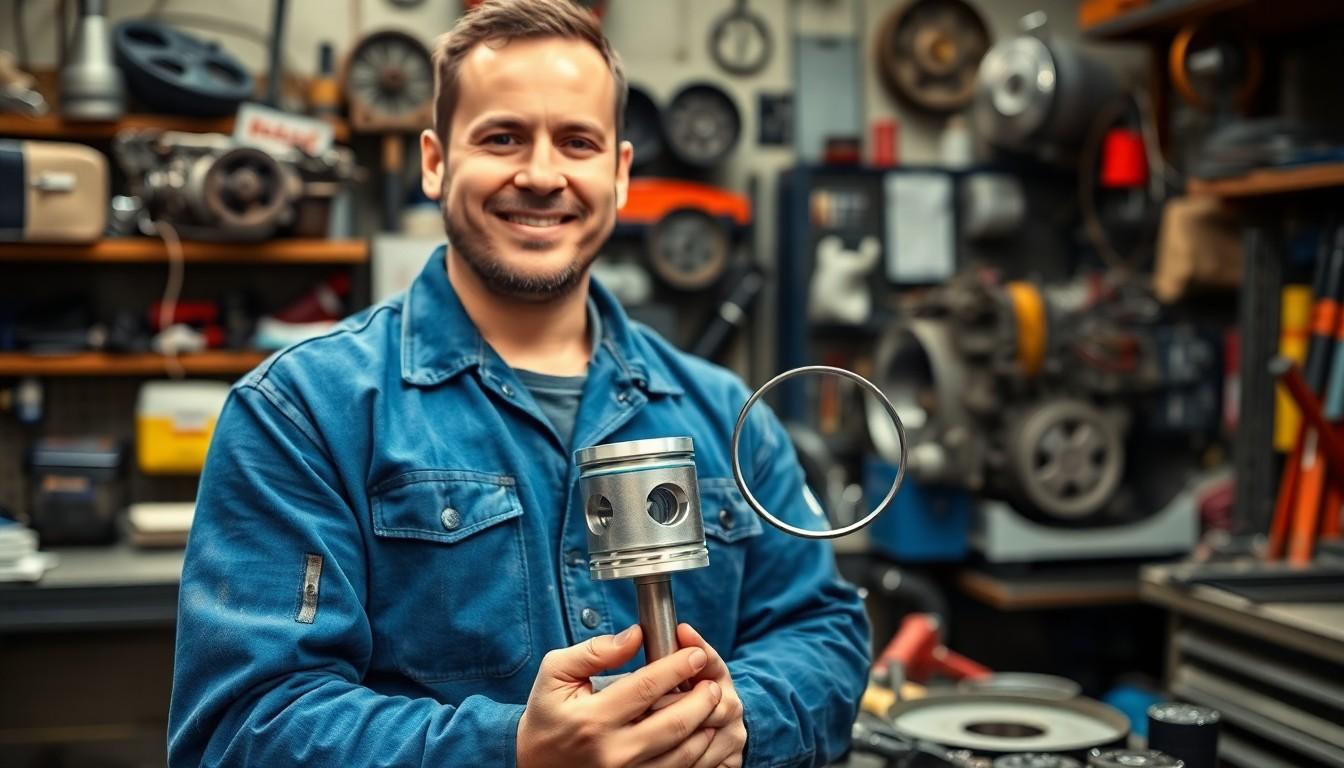
Piston replacement doesn’t have to expensive if you’re strategic about your approach. We’ve gathered proven methods to help you reduce costs while still ensuring quality repairs.
Finding Quality Affordable Parts
Researching multiple suppliers offers the best opportunity to find competitive pricing on quality piston components. Aftermarket parts typically cost 30-50% less than OEM alternatives while maintaining acceptable quality standards. Many online retailers provide detailed specifications allowing for direct comparisons between manufacturers.
Used or refurbished pistons present another cost-saving option when sourced from reputable salvage yards or rebuilders. These parts often undergo inspection and certification processes to verify their condition. Before purchasing, always check for any visible damage or excessive wear that might compromise performance.
The OEM versus aftermarket decision significantly impacts your budget. While OEM pistons guarantee precise compatibility with your engine, they command premium prices of $150-200 per piston. Aftermarket alternatives from established brands like Mahle or Wiseco offer similar quality for $50-100 per piston, creating substantial savings on a complete engine set.
Negotiating with Mechanics
Obtaining multiple quotes from different repair shops creates leverage for negotiation. Contact at least three reputable mechanics and request detailed written estimates that break down parts and labor costs. These comparisons often reveal price differences of $200-500 for identical services.
Labor costs represent the largest expense in piston replacement, ranging from $500-1,500 depending on the shop’s hourly rate. Discussing potential rate adjustments or asking about discounted rates for extensive engine work can yield meaningful savings. Many independent shops offer more flexibility on labor rates than dealerships.
Bundling additional necessary repairs with your piston replacement often results in efficiency discounts. Timing belt replacement, water pump service, or valve adjustments performed simultaneously reduce overall labor time. This approach typically saves 15-20% compared to completing repairs separately.
Warranty coverage provides essential protection against future repair costs. Quality mechanics offer 12-24 month guarantees on both parts and workmanship. This protection ensures any premature failures won’t result in additional expenses, making slightly higher upfront costs worthwhile for this long-term security.
Preventing Future Piston Damage
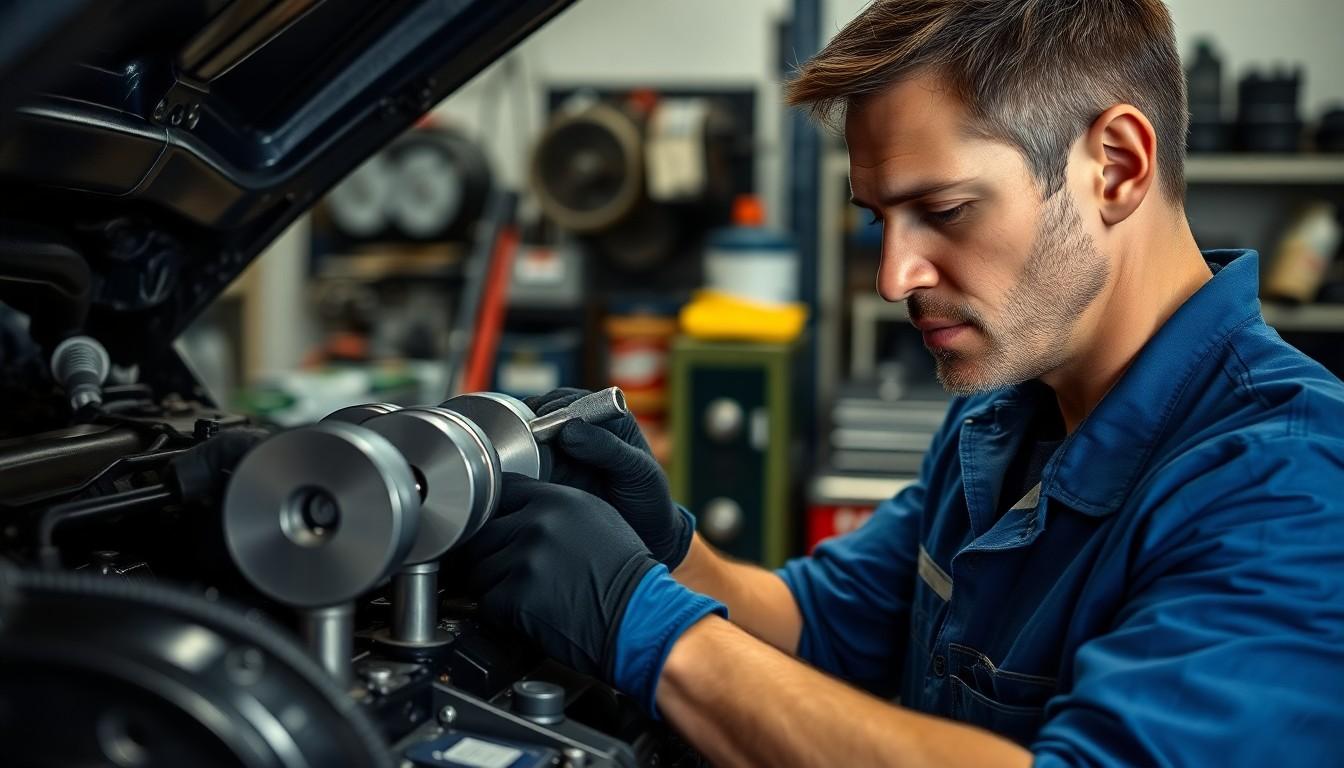
Preventing piston damage is more cost-effective than dealing with expensive replacements. Regular maintenance practices and early detection of warning signs can significantly extend your engine’s lifespan and help avoid the $1,000-$5,000 cost of piston replacement.
Proper Maintenance Practices
Regular oil changes form the foundation of effective piston protection, ensuring proper lubrication of all engine components. Fresh oil maintains its viscosity and cleaning properties, preventing carbon deposits and reducing friction between pistons and cylinder walls. The cooling system requires consistent maintenance to prevent overheating—a primary cause of piston damage—including regular coolant flushes and inspection of hoses, radiator, and water pump for leaks or blockages.
Air filter maintenance ensures clean air enters the combustion chamber, preventing abrasive particles from causing premature wear on pistons and rings. Replacing air filters every 15,000-30,000 miles protects internal engine components from contaminants. Spark plug maintenance directly impacts combustion efficiency, with worn plugs potentially causing incomplete fuel burning and carbon buildup on pistons.
Following the manufacturer’s service intervals for timing belt or chain replacement prevents catastrophic engine damage, as a failure can result in pistons striking valves. Using high-quality fuel with the correct octane rating reduces the risk of pre-ignition and detonation, both of which can crack or damage pistons over time.
Warning Signs to Monitor
Excessive oil consumption indicates worn piston rings or cylinder walls, typically noticeable when you’re adding more than a quart of oil between scheduled changes. Blue or gray exhaust smoke, especially during acceleration, signals oil burning in the combustion chamber due to compromised piston rings or worn valve seals.
Engine knocking or clunking sounds often point to piston damage, with distinct metallic rapping noises intensifying during acceleration. Decreased engine performance manifests as reduced power, poor acceleration, or diminished fuel economy—all potential indicators of compromised piston function.
White smoke from the exhaust typically indicates coolant entering the combustion chamber, possibly from a cracked piston or damaged head gasket. Rough idling or engine misfires, especially under load, suggest combustion issues that may relate to piston damage or ring failure.
Modern vehicles display warning lights that shouldn’t be ignored, as check engine lights often illuminate when sensors detect abnormal combustion or pressure variations caused by piston problems. Cylinder compression tests reveal piston health, with low readings in one or more cylinders suggesting ring wear or piston damage that requires immediate attention.
Conclusion
Piston replacement represents a important investment in your vehicle’s health but armed with the right knowledge you can make informed decisions about this repair. Whether you choose professional service for expertise and warranties or tackle it yourself for cost savings remember that quality parts and proper technique are non-negotiable.
The costs may seem steep ranging from $1,000 to $4,000 but understanding what drives these expenses empowers you to find potential savings without compromising results. Regular maintenance remains your best defense against premature piston failure.
We hope this guide has demystified the piston replacement process and given you confidence to address engine issues before they escalate. With proper care and timely intervention your engine can deliver reliable performance for many miles to come.
Frequently Asked Questions
What are the signs that my pistons need replacement?
Look for knocking noises, blue or gray exhaust smoke, decreased engine performance, excessive oil consumption, and rough idling. If you notice these symptoms, it’s time to have your engine checked. Permanent damage like scoring on piston walls, low compression test results, broken piston rings, or visible damage from inspections indicate that replacement is necessary.
How much does piston replacement typically cost?
Piston replacement typically costs between $1,000 and $4,000, depending on your vehicle’s make and model. For a standard 4-cylinder engine, expect to pay $1,000-$2,000. Luxury or high-performance vehicles generally cost more due to specialized components. Labor costs ($1,000-$2,000) make up a significant portion of the total expense.
Can I replace pistons myself to save money?
Yes, but it requires extensive mechanical knowledge, specialized tools, and significant time (15-30 hours). DIY replacement can save on labor costs, but you’ll need tools like a ratchet and socket set, piston ring compressor, and quality piston oil. The risk of errors is high, and mistakes can lead to more expensive repairs or engine damage.
What’s the difference between OEM and aftermarket pistons?
OEM (Original Equipment Manufacturer) pistons ensure exact compatibility with your engine but cost more. Aftermarket pistons are typically more budget-friendly but may vary in quality. For critical engine components like pistons, many mechanics recommend OEM parts for reliability, while aftermarket options can be suitable for older vehicles or budget repairs.
How long does professional piston replacement take?
Professional mechanics typically complete piston replacement in 8-15 hours, depending on the engine complexity and any complications encountered. This timeframe includes engine removal, disassembly, replacement of pistons and related components, reassembly, and testing. DIY enthusiasts should expect to spend considerably longer (15-30 hours).
What other parts need to be replaced along with pistons?
Piston rings should always be replaced with the pistons. You may also need to replace cylinder liners, connecting rods, bearings, gaskets, and seals depending on their condition. Many mechanics recommend replacing all pistons simultaneously even if only one is damaged, as well as performing a thorough inspection of related components.
How can I save money on piston replacement?
Research multiple suppliers for competitive parts pricing, consider quality used or refurbished pistons, and get quotes from several repair shops to negotiate better rates. If you’re mechanically inclined, performing some disassembly work yourself before taking it to a mechanic can reduce labor costs. Always ensure parts come with warranties for long-term savings.
How can I prevent future piston damage?
Maintain regular oil change schedules with the manufacturer-recommended oil type. Replace air filters regularly, as dirty air can cause premature piston wear. Monitor for warning signs like excessive oil consumption or engine knocking. Avoid overheating your engine and don’t push your vehicle beyond its capabilities, especially when towing or hauling heavy loads.







